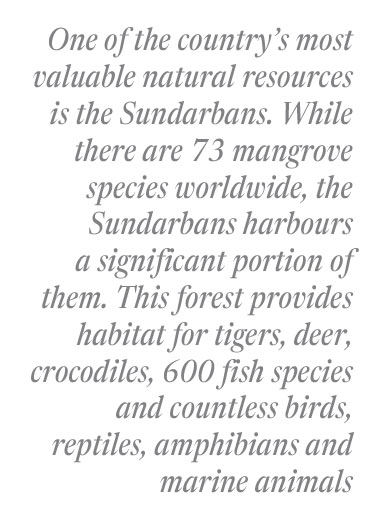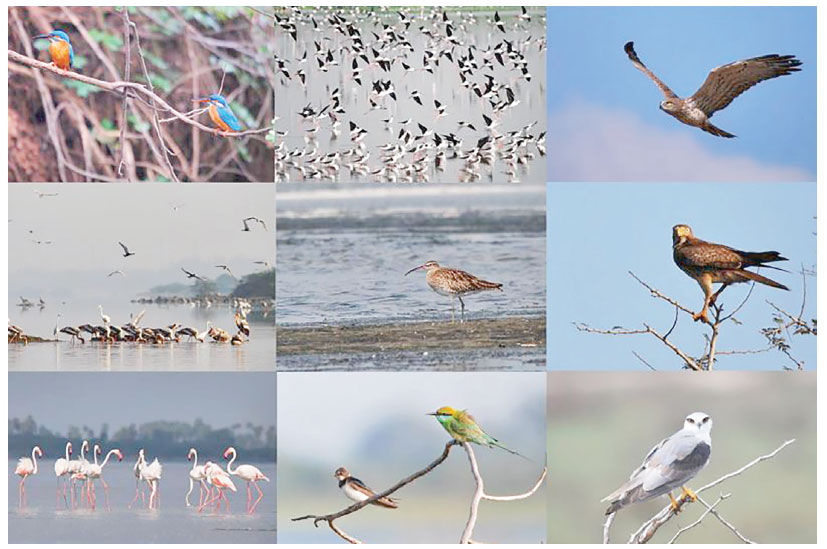Birdwatching in Bangladesh: A new horizon for tourism
Shakhawat Hossain Sumon, Dhaka
Published: 26 Sep 2025

Bangladesh, a land of extraordinary natural diversity, is emerging as a promising destination for niche tourism. From lush forests and winding rivers to the vast Sundarbans and rare wildlife, the country offers a unique ecological landscape. Among its most exciting opportunities is birdwatching - a rapidly expanding form of ecotourism worldwide. With millions of migratory birds visiting its coasts each year, Bangladesh is well-positioned to become a global hub for birdwatchers. By leveraging its rich biodiversity, the country can promote sustainable tourism, strengthen local economies and raise awareness about conservation.
 Growing popularity of birdwatching worldwide
Growing popularity of birdwatching worldwide
Prof Dr Mohammad Muslem Uddin (Munna), former chairman of the Department of Oceanography at the University of Chittagong, stated in a research paper that birdwatching has emerged as one of the most popular and rapidly growing forms of ecotourism globally. In the United States, nearly 20% of the population identifies themselves as birdwatchers. Between 2005 and 2009, around 20 million Americans travelled specifically for birdwatching, with an average stay of 14 days, spending approximately $50 billion annually worldwide.
In the United Kingdom, about 72 million people visit natural areas each year, with a significant portion engaged in birdwatching. Research shows that birdwatchers are generally well-educated and financially well-off, making them a target audience for sustainable tourism development.
Huge potential for birdwatching in Bangladesh
According to Munna, also an advisor to Radiant Fish World, Bangladesh occupies a strategic position on major migratory bird flyways. Every year, millions of birds migrate from West Asia, Central Asia and East Asia, seeking refuge in Bangladesh. Rare bird species can be seen in areas such as Sundarbans, Teknaf, Cox’s Bazar, Hatiya, Nijhum Dwip and Sandwip Island. The Sundarbans alone has recorded 315 bird species.
Some migratory birds, including the Spoonbill Sandpiper, Nordmann’s Greenshank, Asian Dowitcher and Great Knot, are critically endangered. Certain species breed in Siberian tundras and migrate to the coastal regions of Bangladesh during winter. With proper planning and promotion, these birds could serve as a foundation for world-class tourism attractions.

Rich reptilian biodiversity
Munna further emphasised that Bangladesh is also rich in reptilian biodiversity. The country is home to 126 species of reptiles, including 109 terrestrial species and 17 marine species. Among them are 67 species of snakes, 21 species of turtles and tortoises, 18 species of lizards and two species of crocodiles.
The saltwater crocodile, the largest living reptile, is found in the Sundarbans and can reach lengths of up to 5 metres and weigh about 1 tonne. Other notable species include the Burmese python, Tokay gecko and the historically significant Bostami turtle. Preserving these species not only aids research but can also enhance wildlife-based tourism in the country.
Global significance of Sundarbans
According to the Bangladesh Tourism Corporation, one of the country’s most valuable natural resources is the Sundarbans- the world’s largest mangrove forest. While there are 73 mangrove species worldwide, the Sundarbans harbours a significant portion of them. This forest provides habitat for tigers, deer, crocodiles, 600 fish species and countless birds, reptiles, amphibians and marine animals.
Mangroves have unique adaptations; they tolerate high salinity, absorb oxygen through aerial roots and produce large seedlings that can withstand flooding. These adaptations make mangrove forests ecologically invaluable.
Research highlights the multiple benefits of mangroves. They sequester carbon, mitigating climate change, protect coastal areas from erosion and storms and preserve biodiversity. Mangroves supply timber, fish, shrimp and crabs to local communities. Certain species provide tannins used in the leather industry and the forest also supports tourism by creating new attractions.
During the 2004 Indian Ocean tsunami, coastal areas with mangrove forests experienced less damage. A study in Sri Lanka found that 200 hectares of mangrove-lagoon ecosystems provide nearly $100,000 annually in economic benefits, demonstrating the forests’ value in both ecology and local livelihoods.

Planning for sustainable tourism
Munna noted that global experience shows birdwatching is not only recreational but also economically significant. With proper planning, it could become a cornerstone of sustainable tourism in Bangladesh, generating local employment, preserving biodiversity and strengthening the country’s presence in the international tourism market.
With government initiatives, research, local community participation and international promotion, Bangladesh can emerge as a birdwatching hub in South Asia. Simultaneously, leveraging unique resources such as reptiles and mangroves could establish a new horizon for biodiversity-based tourism, he said.
The expert also told the Daily Sun that niche tourism includes various types of travel, such as adventure, rural, cultural, ecological (birdwatching) and medical tourism. These can help tourism businesses create specialised offerings for domestic and international visitors while raising awareness about the importance of nature conservation.
(The reporter can be reached at: [email protected])
Edited by Abdul Mukith

